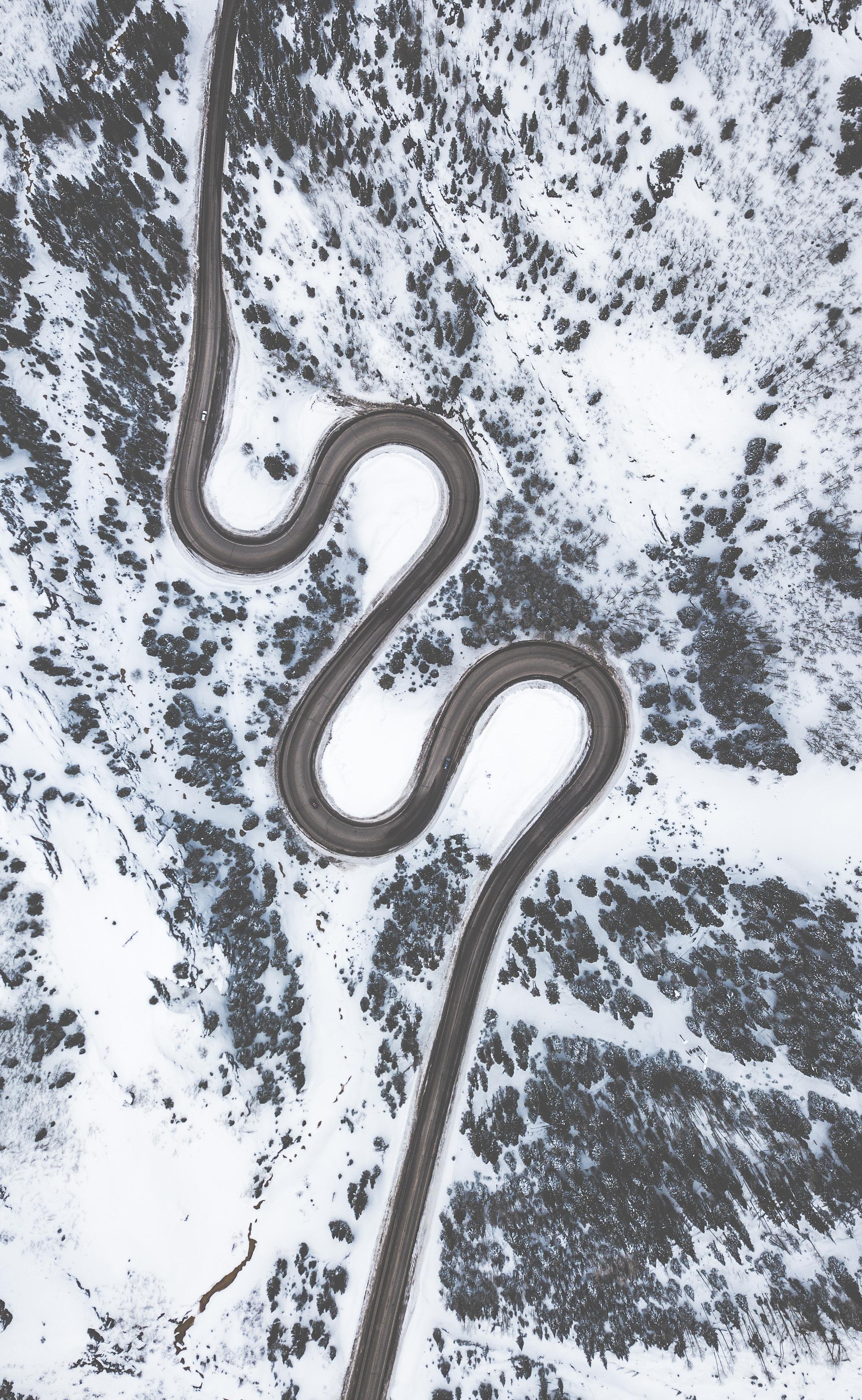
2 minute read
BEHIND THE LENS
camera DJI Mavic Pro aperture f/2.2 exposure 1/160 focal length 4.73mm iso 100 Above: A bird’s-eye view of the Million Dollar Highway as it winds down Red Mountain Pass in Southwest Colorado. photo by Terrance Siemon
As Above, So Below
Drone photography in the winter provides a fresh perspective
BY TERRANCE SIEMON
When the snow falls, everything looks better. It transforms the landscape — trees look prettier, mountains look bigger and towns look cleaner.
The moments immediately after a fresh snowfall are a great time to get out and take photographs, and using a drone opens up a whole new realm of opportunity since it can go places your two feet can’t take you.
BEFORE YOU FLY
There’s a few things to mention about drone operation in the winter that you need to know. While the battery on most drones can operate between 0-40 degrees Celsius, the issue is that the battery life does not last long if it’s cold out. Always keep the batteries warm before you insert them into the drone. Also, let the drone hover for a minute after take off to warm up the cells.
FIND THE LIGHT
One great thing about the winter months is lighting. We get long golden hour light with dramatic shadows since the earth is tilted away from the sun. Another plus is the twilight hours (which are best for photography in general), which arrive earlier in the day. So waiting for that sunset shot requires less time compared to the summer months.
VANTAGE POINTS
Something you will notice a lot of with drone photography is vantage point. Since we are not used to seeing images taken from the perspective a drone can achieve, it’s one of the first things to stand out in a drone photo where the vantage point was taken into consideration. During a flight I always think, “What can I shoot with this that would be impossible to shoot with my DSLR?” One example: flying the drone over an ice cold lake or a body of water that you’re not about to go swim in to take a picture. Well, now you don’t have to!

Above: Alpenglow above Little Molas Lake in the San Juan Mountains. photo by Terrance Siemon
camera DJI Mavic Pro aperture f/2.2 exposure 1/240 focal length 4.73mm iso 100
BIRD’S-EYE VIEWS
A commn yet always interesting angle that never disappoints is the bird’s-eye view. Although it is utilized a lot, the compositions that can be found from this angle are endless. Roads take a new shape, trees create amazing patterns and the texture of snow can be used as a canvas to make leading lines, anomalies and symmetry within your image.
If you are going to fly a drone, please make sure you follow all FAA guidelines and have your sUAS pilot license.

camera DJI Mavic Pro aperture f/2.2 exposure 1/2000 focal length 4.73mm iso 100 Left: Black and white photography works well in the winter to showcase the tonal range across the shadows and highlights. photo by Terrance Siemon










